Are you struggling to choose the right growing medium for your grow tent? This article clarifies the differences between hydroponics vs soil, focusing on key benefits and drawbacks of each option. It covers advantages of hydroponic systems, benefits of soil for indoor growth, and tips on evaluating indoor cannabis growth setups. Readers will learn how to select a method that fits their needs while addressing common issues like nutrient management and space efficiency.
Key Takeaways
- hydroponics systems allow precise nutrient control through water-based solutions
- soil growing relies on natural microbial activity for steady plant development
- automated systems support efficient nutrient delivery and water management
- grow tents designed for hydroponics offer smart space and energy management
- combining organic inputs with sensor technology improves indoor cannabis cultivation
Understanding Hydroponics and Soil as Growing Mediums
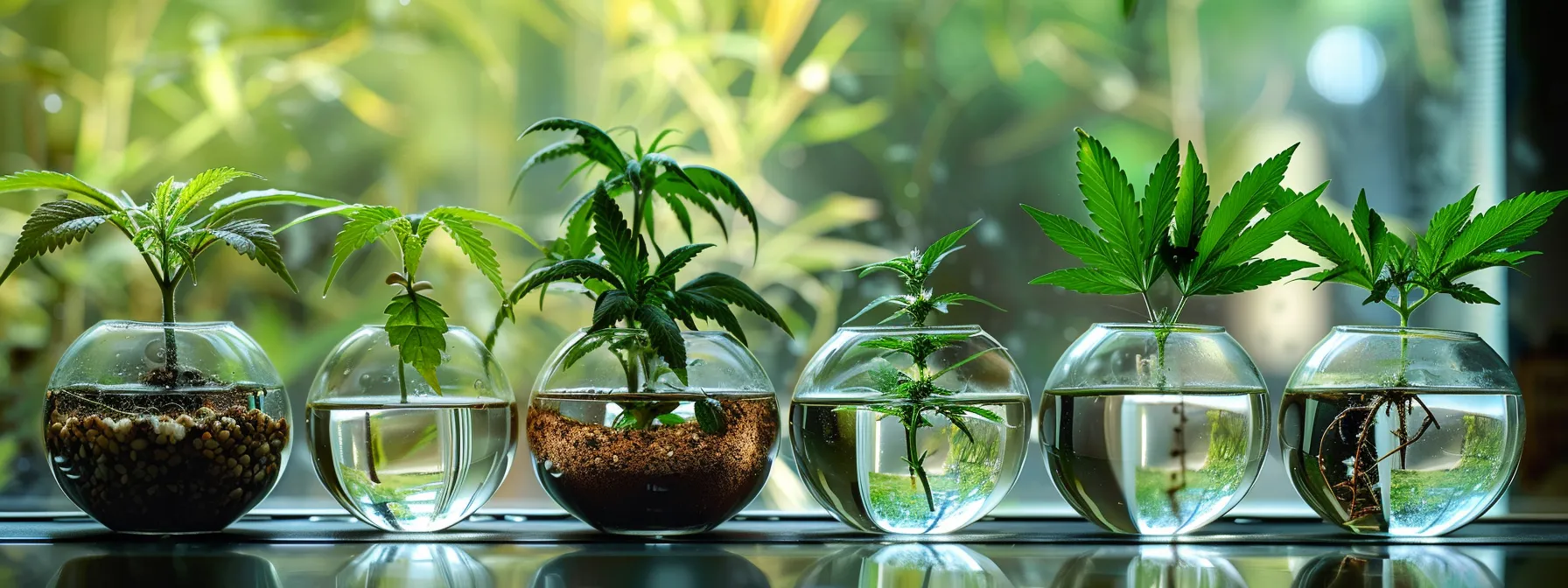
This section outlines hydroponics, which uses systems like expanded clay aggregate and water-based nutrients, and soil growing, where potting soil and moss support plant roots. It also compares key differences in management, offering readers a clear account of each method's fundamentals for informed grow tent decisions.
Definition and Basics of Hydroponics
Hydroponics offers a soil-free method where plants obtain necessary nutrients directly through water solutions. Expert growers often use trellis systems to support plant structure and vermiculite to promote optimal germination, ensuring that water delivery remains efficient and consistent.
This method emphasizes precise nutrient control and minimal leak potential, reducing the need for traditional soil amendments. The approach allows a cleaner environment for plant growth, with careful monitoring of water quality playing a key role in successful cultivation.
Definition and Basics of Soil Growing
Soil growing relies on a natural medium where the rhizosphere supports plant roots and bacteria assist in breaking down organic matter into essential nutrition, fostering steady growth. This method offers growers the flexibility to work with natural elements, reducing pressure on the system as plants absorb nutrients directly from a balanced soil composition.
In soil growing, the interaction of bacteria and organic compounds significantly influences the speed of nutrient absorption through subtle shifts in the soil's structure:
| Component | Role |
|---|---|
| Rhizosphere | Supports root development and nutrient uptake |
| Bacteria | Processes organic matter for enhanced nutrition |
| Soil Structure | Determines water retention and overall growth pressure |
This structure offers practical insights for users evaluating grow tent options and seeking effective ways to manage soil-based systems.
Key Differences Between Hydroponics and Soil
Hydroponics and soil systems exhibit distinct differences in operation and maintenance. Hydroponics uses a water-based nutrient system that minimizes excess weight on delicate root structures, reducing the risk of root rot, while also avoiding complications associated with soil debris and husk remnants during a flood scenario:
- Efficient water delivery system
- Reduced accumulation of husk and debris
- Low risk of weight-related stress
- Strict nutrient and water quality monitoring
In contrast, soil growing relies on natural materials such as humus to provide essential nutrients, but its reliance on organic matter can create challenges if excessive moisture or weight leads to root rot. Practical growers must consider factors such as the handling of soil weight and the prevention of flood-induced erosion while taking advantage of organic components that enrich plant growth.
Advantages of Using Hydroponic Systems
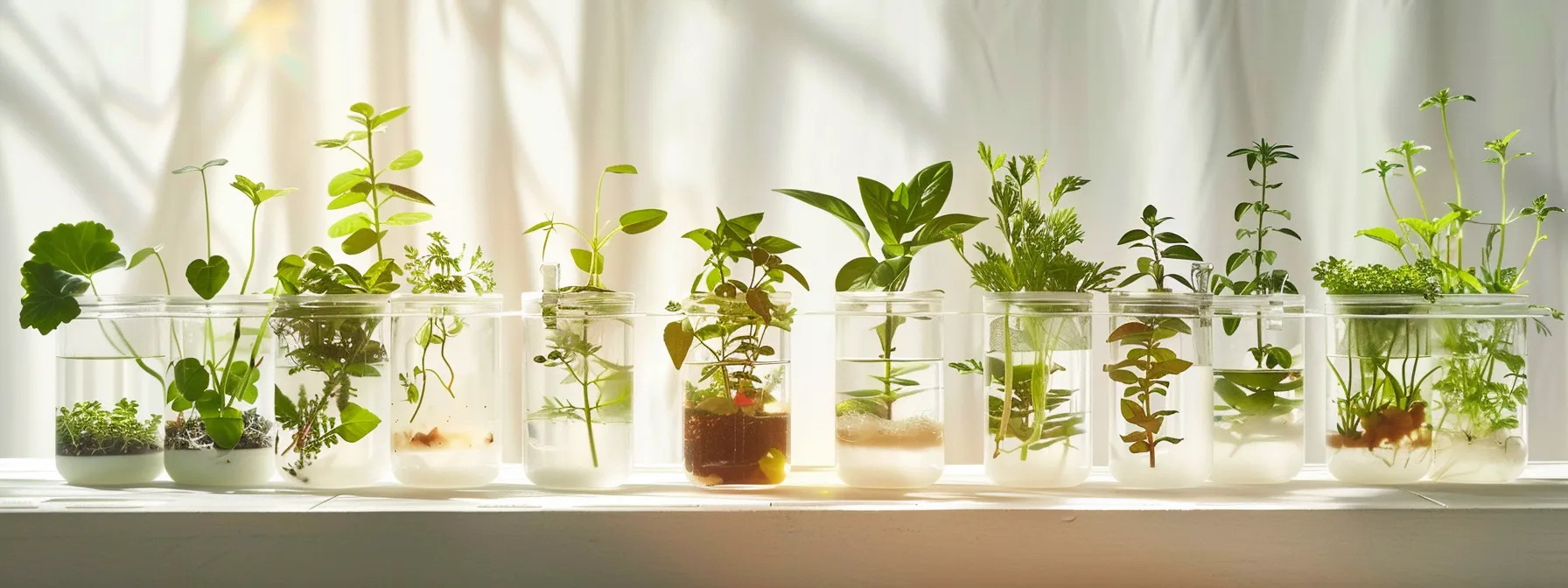
The advantages of hydroponic systems include faster growth rates, efficient moisture use, and optimal space management in agriculture. A hybrid approach combining renewable resource principles with advanced water techniques offers canna enthusiasts practical insights on maximizing crop efficiency while reducing water waste.
Faster Growth Rates of Hydroponic Plants
Hydroponic cultivation promotes rapid plant development by providing direct access to water-soluble nutrients and an optimized culture environment, speeding up the growth process compared to soil. Automated systems manage nutrient delivery and water cycles, ensuring that essential elements such as fiber and clay-based components contribute to healthier, faster-growing plants.
This method enables precise control over the growing environment, allowing growers to adjust settings for optimal development while keeping production environmentally friendly and efficient:
- Precise nutrient management through automation
- Consistent water delivery enhancing growth speed
- Utilization of fiber and clay elements to support structure
- Environmentally friendly practices in controlled culture settings
Space Efficiency in Hydroponic Systems
Hydroponic systems offer a compact setup that simplifies space management while providing direct control over factors such as magnesium levels, ensuring a balanced nutrient profile that may reduce risks of disease. This approach allows growers to use their available area more effectively compared to traditional soil methods, where soil health can vary widely.
Growers see hydroponics as a sound investment due to its efficient layout and reduced dependency on soil, which can sometimes lead to disease issues if not maintained properly. The optimized space utilization in these systems makes them an attractive option for those seeking consistent results without the challenges often associated with soil-based cultivation.
Water Utilization in Hydroponics
Hydroponic systems maximize water efficiency by employing automated cycles that optimize electricity use and reduce system stress, ensuring that customers receive consistent plant growth even in limited space. This setup minimizes insect interference while providing a controlled environment where ventilation and water delivery work in unison.
Optimized water utilization in hydroponics results in a streamlined process that lowers overall resource waste and maintenance challenges, leaving growers with more reliable outputs and less equipment strain:
| Component | Role |
|---|---|
| Water Delivery | Efficient supply of water and nutrients |
| Electricity | Supports automated cycles and controls |
| Ventilation | Regulates airflow to reduce system stress |
| Insect Control | Reduces pest-related disruptions |
Benefits of Soil for Indoor Growing
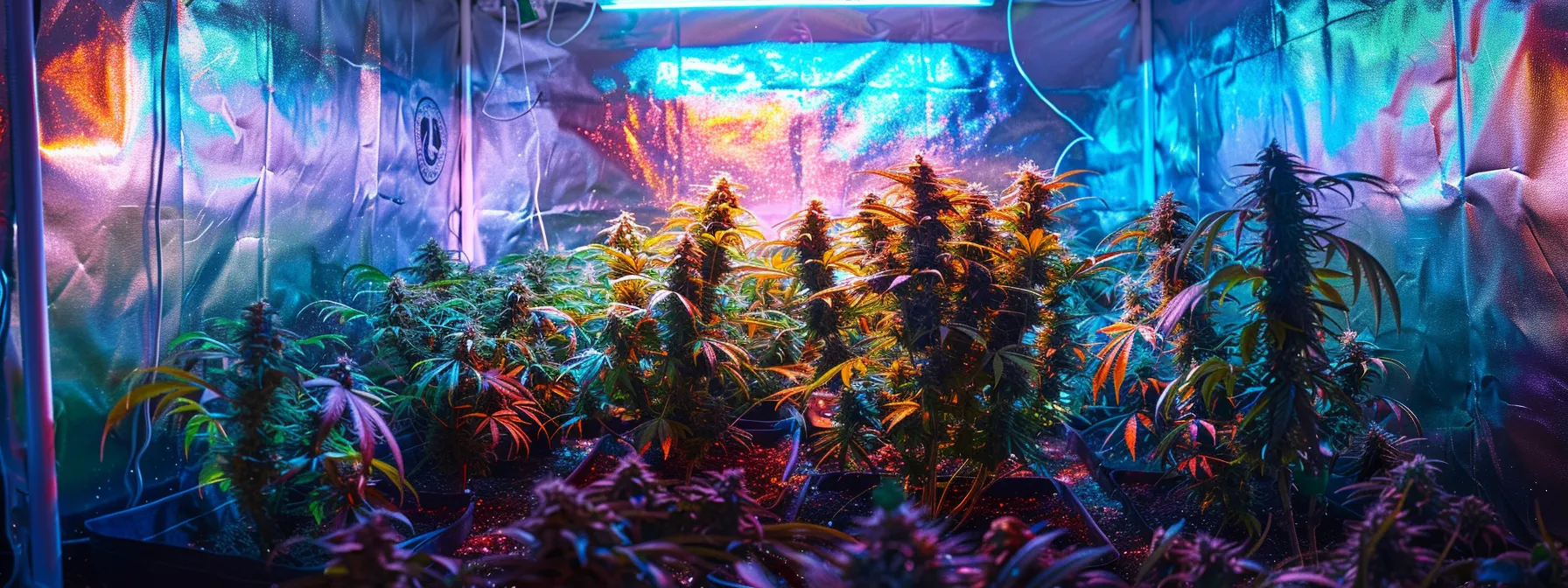
Soil-based systems offer natural nutrient sources, a robust soil microbiome enhancing plant health, and cost-effectiveness compared to deep water culture. Experts note that integrating kelp and coupon deals on Best Grow Tents for Cannabis make soil a practical choice for indoor growing. This section provides practical insights into these key advantages.
Natural Nutrient Sources in Soil
The natural nutrient sources in soil enhance plant health by using an organic substrate that supports vital microbial activity and plant nutrition. A well-maintained soil system features earthworm activity that helps break down organic material into usable nutrients for indoor growing.
The active view of soil as a medium highlights its ability to naturally suppress pest issues while offering a balanced nutrient profile. Some indoor growers even incorporate elements of javascript in automated systems to monitor soil conditions and further improve growth outcomes.
Soil Microbiome and Its Impact on Plant Health
The benefits of a vibrant soil microbiome directly influence plant health by improving nutrient absorption and promoting resilient root systems. Practical growers observe that managing the soil’s oxygen content can mirror efficient setups like the kratky method, especially when environmental factors such as climate and air conditioning play supporting roles.
Research indicates that a diverse soil microbiome fosters the production of natural terpene compounds, which contributes to robust plant growth indoors. Experts note that this dynamic system helps secure plant vitality by ensuring organic matter breaks down efficiently, offering a reliable alternative to more engineered growing techniques.
Cost-Effectiveness of Soil-Based Systems
Soil-based systems provide a cost-effective solution for indoor cultivation by naturally regulating humidity levels and supporting excellent drainage. The practice reduces the risk of contamination while allowing growers to benefit from data that links stable soil conditions with consistent tetrahydrocannabinol yields.
Experienced cultivators value soil setups for their low-cost maintenance and minimal reliance on synthetic inputs. Reliable data confirms that proper soil management not only improves drainage and maintains optimal humidity but also supports stable tetrahydrocannabinol production free from contamination issues.
Evaluating Hydroponic Weed Tents
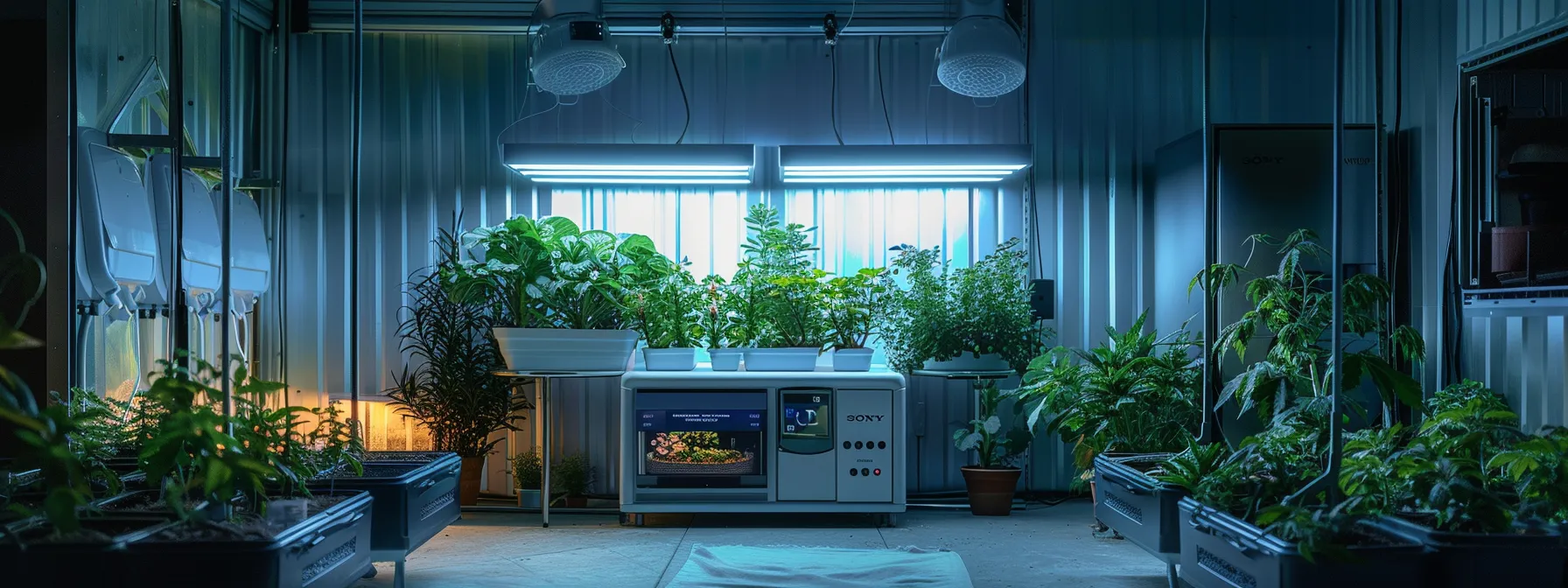
Smart app control, forest views, and expert insights from bestmarijuanaguide.com set the stage for evaluating hydroponic weed tents. The guide covers ideal features of hydroponic grow tents, best practices for weed cultivation, and common challenges that affect harvest and garden success. These topics provide practical direction for growers seeking efficient setups.
Ideal Features of Hydroponic Grow Tents
Hydroponic grow tents with pro-grade design feature smart controls to optimize efficiency in nutrient distribution, making them ideal for setups that integrate organic fertilizer mixes, including guano and worm castings. The design minimizes maintenance while providing stable environments for rapid plant development, allowing cultivators to achieve consistent results with minimal hassle:
- Automated water and nutrient control systems
- Efficient space utilization for pro installations
- Compatibility with organic fertilizer inputs such as guano and worm castings
These tents offer a balanced approach that supports both modern hydroponics and advanced nutrient management, delivering actionable benefits to users seeking reliability and higher efficiency in their grow tent systems. The attributes of advanced designs, along with capabilities to incorporate diverse fertilizer options, position these tents as a valuable tool for proactive cultivators in pursuit of effective results.
Best Practices for Hydroponic Weed Cultivation
The expert team observes that effective hydroponic weed cultivation in grow tents requires regular monitoring of water and nutrient systems, using equipment crafted from metal for durability and efficiency. Integrating practices from aeroponics, setups often apply organic additives like fish meal to enrich the solution, ensuring each leaf receives balanced nutrition for robust growth.
Practitioners also emphasize the importance of timely maintenance, where periodic checks with soil conditioner alternatives support the system's overall health. The approach consistently delivers seasoned insights that help growers overcome common challenges, making adjustments based on direct observations and proven strategies.
Common Challenges in Hydroponic Growing
Hydroponic growing presents distinct challenges that affect crop reliability and seedling development. The system requires meticulous balancing of nutrient elements such as phosphorus to ensure each seed receives the optimal conditions needed for healthy progress, while effective advertising of these technical specifications aids users in maintaining consistent yields.
Systems often encounter issues with equipment durability and nutrient consistency that may hamper crop quality and seedling growth:
| Issue | Impact |
|---|---|
| Equipment Wear | Reduces seedling support and disrupts nutrient flow |
| Nutrient Imbalance | Leaves phosphorus levels irregular and affects crop development |
Regular checks and refinements guided by practical expertise help maintain system stability and ensure successful seed sprouting in hydroponic weed tents.
Deciding Between Hydroponic and Soil Grow Tents

Smart growers consider available space, plant compatibility, and long-term system expenses. The discussion will cover how hydroponic methods suit energy-driven, precise growth conditions with stable ph levels, whereas soil systems benefit certain species and manage hash oil residues naturally. An analysis of bone structure support and gallon water usage will provide essential insights for informed grow tent decisions.
Factors to Consider Based on Available Space
When determining the ideal setup, growers must evaluate the available space to ensure the tent system accommodates both transplanting and subsequent plant development without crowding. Precision in planning allows for proper aeration while providing enough room to easily prune and maintain healthy growth.
Space allocation also dictates how efficiently the tent's design supports stable systems and clear pathways for transplanting mature seedlings. Effective use of area results in improved aeration, enabling timely prune sessions and fostering robust plant development indispensable for sustained yield and quality.
Types of Plants Suited for Hydroponic vs Soil
Hydroponic systems suit plants that require precise control over micronutrient delivery, which can boost bud development with a consistent supply of carbon and other essential elements. Experts find that plants with less dependency on complex soil structure often thrive with direct nutrient access when bone meal and supplemental micronutrient additives are carefully managed.
Soil setups favor plants that benefit from the gradual release of nutrients provided by natural amendments and robust soil structure. Experienced growers note that species known for their hearty bud formation perform well in environments enriched with bone meal, where organic matter gradually improves micronutrient availability and carbon balance.
Long-Term Cost Analysis of Each System
When analyzing long-term cost benefits, experts observe that hydroponic systems require higher upfront investments due to specialized reservoir setups and automated nutrient delivery, while soil systems tend to offer lower installation expenses. The potential risk associated with maintenance differs, as soil setups may incur additional costs for managing mineral imbalances, whereas hydroponic users face expenses related to equipment upkeep like replacing a worn zipper on auxiliary components.
Experienced growers note that total system costs depend on consistent management practices and proper resource allocation; the following table outlines key cost considerations for each system:
| System Type | Initial Investment | Maintenance Factors |
|---|---|---|
| Hydroponic | Higher due to reservoir and tech integration | Includes risk of equipment wear and nutrient precision |
| Soil | Lower costs with simple setup | Focuses on managing organic matter and mineral levels |
These insights help cultivate an informed decision-making process, ensuring that each cost matter is assessed with practical examples in mind.
Top Mediums for Indoor Cannabis Growth
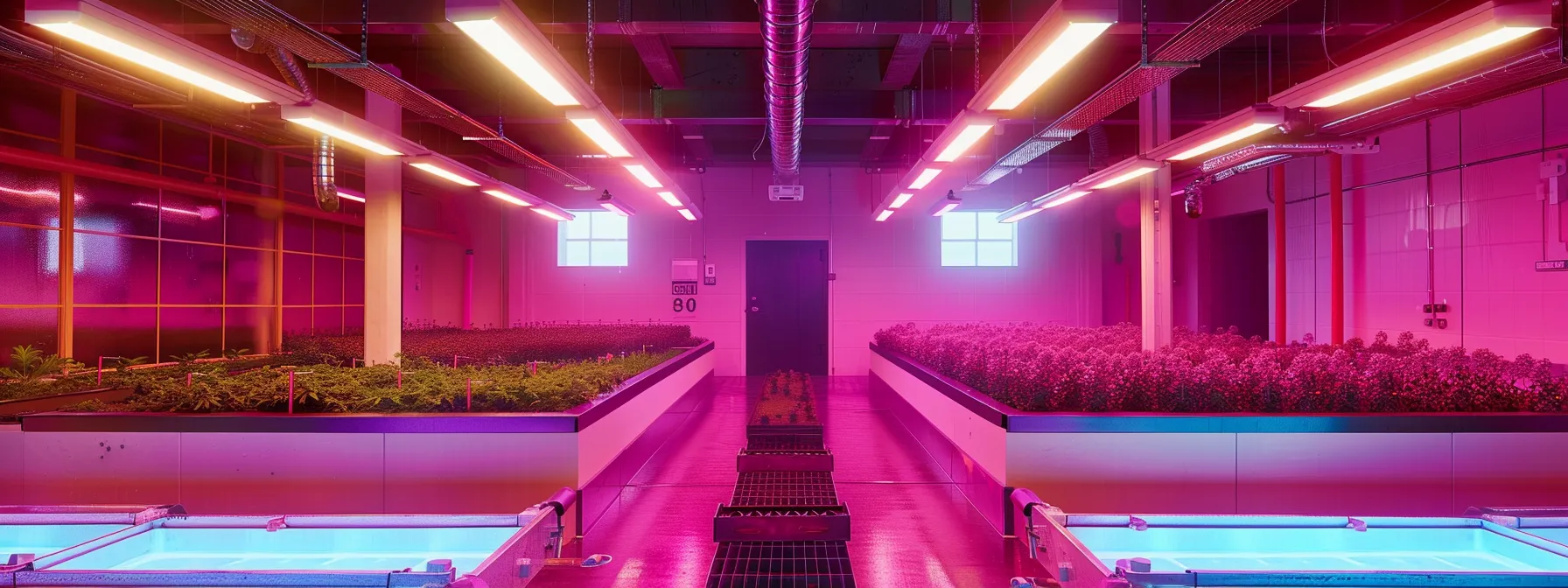
This section examines soilless mixes for hydroponics alongside recommended soil blends for cannabis. It outlines nutrient management strategies that integrate precise irrigation and maintain potassium levels, ensuring optimal plant health. The text also highlights how an exhaust system improves air flow, creating a strong link between these practical approaches and effective indoor growth.
Evaluating Soilless Mixes for Hydroponics
The evaluation of soilless mixes in hydroponic setups allows growers to optimize nutrient management and support cannabinoid-rich growth while minimizing soil-related challenges. In a modern system equipped with bluetooth-enabled monitoring, practical examples demonstrate how tailored mixes provide precise control over nutrient delivery and plant vigor:
- Precise blend formulation for targeted nutrient management
- Integration with bluetooth systems for real-time monitoring
- Improved control over cannabinoid production
Researchers and practitioners note that soilless mixes offer a streamlined approach to hydroponic cultivation, reducing the potential pitfalls of traditional soil and promoting an efficient grow environment. This method provides actionable insights that directly address common pain points in nutrient regulation and overall plant health.
Recommended Soil Blends for Cannabis
BestMarijuanaGuide.com presents recommended soil blends that use a well-balanced mixture of organic components, perlite, and natural minerals to foster robust cannabis growth. Experts emphasize the importance of maintaining proper airflow and pH levels, ensuring that the acid content remains balanced while practical sensor technology monitors soil conditions for optimal results.
Market specialists suggest soil blends enriched with perlite to improve drainage and maintain an ideal balance of nutrients within the mixture. A professional approach to managing airflow and sensor-supported monitoring guides growers in achieving effective pH adjustments, addressing common pain points in indoor cannabis cultivation.
Nutrient Management Strategies for Different Mediums
In optimizing nutrient management strategies, professionals suggest using coir and vermicompost to balance plant nutrition for indoor cannabis growth. Experts rely on precise monitoring tools, such as a reliable power strip for equipment, to ensure systems remain efficient and responsive.
Practical approaches incorporate routine adjustments and data collection, often requesting an email address for direct expert support or tips:
- Regular nutrient solution tests
- Integration of organic substrates like vermicompost and coir
- Utilization of smart monitoring devices connected via a power strip
- Direct expert consultations through submitted email addresses
Frequently Asked Questions
What benefits do hydroponic systems offer?
Hydroponic systems offer efficient nutrient uptake and water conservation while providing customizable growth environments that can boost yield and quality in cannabis cultivation.
How does soil support indoor growth?
Soil supports indoor growth by providing essential nutrients and proper drainage, fostering healthy root development and stable structure in cannabis plants cultivated indoors.
Are hydroponic weed tents effective?
Hydroponic weed tents offer efficient indoor cannabis cultivation. They enable controlled humidity, temperature, and nutrient supply while reducing space requirements and contamination risks.
Which medium suits cannabis better?
Cannabis products perform optimally when developed through advanced extraction methods and careful formulation, offering reliable potency and flavor profiles. This medium suits legal markets and user evaluations on BestMarijuanaGuide.com.
What factors influence grow tent choices?
Grow tent selections are influenced by size, reflective lining, structural durability, ventilation capabilities, lighting compatibility, and ease of installation, ensuring optimal cannabis cultivation conditions.
Conclusion
Hydroponic and soil systems offer distinct benefits that help cultivators tailor their grow tent setups to specific needs. Hydroponic methods provide precise nutrient control, accelerating plant growth and optimizing space, while soil systems leverage natural components to promote robust plant health. Growers gain actionable insights through detailed comparisons covering nutrient management, cost, and environmental factors. This balanced overview underscores the critical role of choosing the right medium to achieve consistent and high-quality cannabis cultivation.


